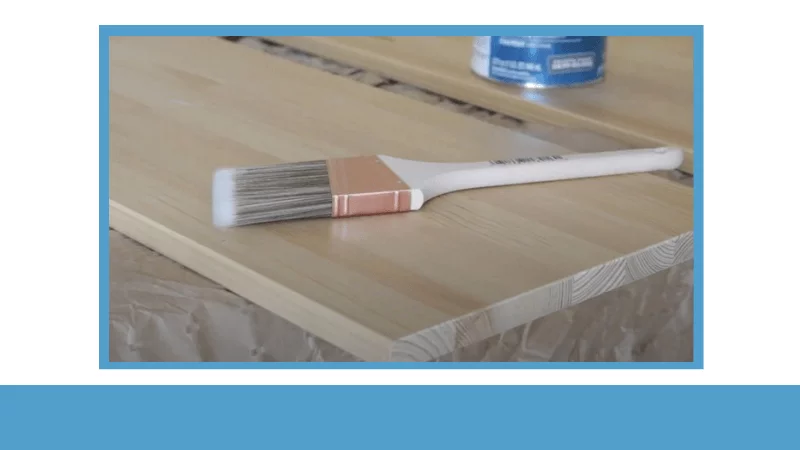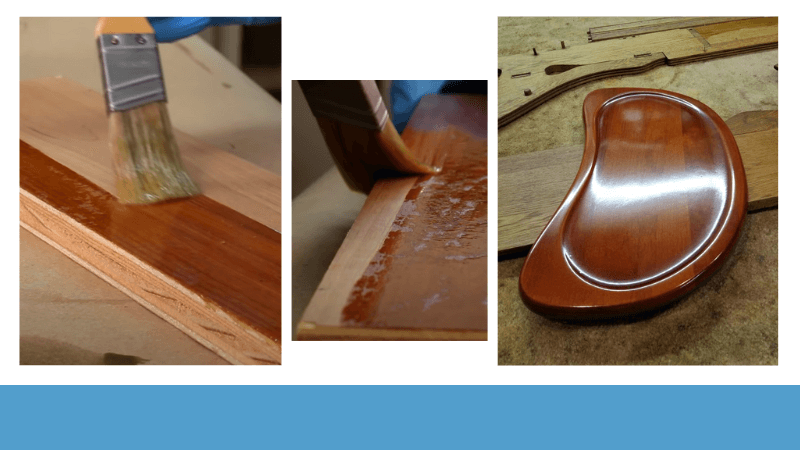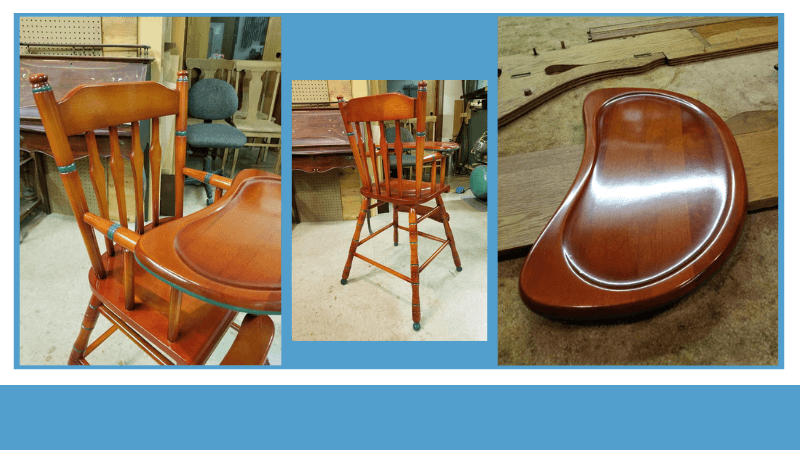Learning how to brush on lacquer opens up a world of possibilities for unlocking the potential of this versatile technique. Unlike other film finishes, lacquer’s unique characteristic lies in its evaporative drying process.
With the first drying qualities lacquer is hardly interrupted by dust. Lacquer has also a unique clarity and color and rubs out more nicely than other finishes. In this article, we delve into the art of brushing on lacquer, providing insights and tips to help you perfect this technique.
Pick the right brush for lacquer
Quality matters in lacquer application. Cheap foam brushes dissolve under lacquer solvents. Synthetic bristles can bleed color onto your work. On the other hand, investing in a good quality brush offers a delightful experience. Lacquer’s self-leveling nature reduces the need for extensive brushwork. However, a good natural bristle brush with flagged bristles is ideal. It spreads lacquer smoothly, holds more material, and releases better.

How to apply lacquer with a brush
Before you start brushing the lacquer finish, ensure your workpiece is positioned in a well-lit area where you can observe the wet finish through reflected light. It’s important to have good ventilation in the room.
Additionally, equip yourself with a mask that has a Niosh rating specifically for organic gases and vapors. This will help protect you from any potentially harmful fumes during the lacquering process.
Steps
- Thin the lacquer following the manufacturer’s instructions.
- Apply a wash coat of lacquer as the sealer base coat using a brush.
- Brush the lacquer in three steps: apply it, tip it off, and let it dry without further brushing to avoid dragging.
- After the first coat has cured, sand it with 280 grit sandpaper to smooth out any upright wood fibers.
- Remove surface dust using a vacuum, tack cloth, or brush.
- Apply the second coat of lacquer and wait for it to dry before adding subsequent coats to build thickness.
- Sanding between coats is not necessary as brush marks will self-level when applying the next coat. However, sanding may be needed to remove dust nibs and imperfections. If sanding between coats, use stearated or wet/dry sandpaper that clogs less.
- Continue applying coats until you are satisfied with the thickness of the finish.
- You can either leave the finish as is or proceed to hand rub the lacquer for a smoother texture.

Making sense of lacquer Thinner
To achieve optimal results in lacquer application, it’s crucial to understand the role of lacquer thinners. The drying speed of lacquer is controlled by the active solvents present. Slower-evaporating solvents are used in lacquer retarders and brushing lacquer.
Lacquer retarder extends the drying and cure time for lacquer. Conversely, fast-evaporating solvents, such as hot lacquer thinner, expedite drying and curing times make it ideal for cold temperatures.
It’s rare to use only lacquer retarders or fast lacquer thinner for thinning lacquer; instead, a small amount is added in place of standard thinner.
However, finding the right proportions often involves trial and error, as different manufacturers offer products with varying evaporation rates, even under the general terms of “standard,” “retarder,” or “fast” lacquer thinner.
6 pro tips for brushing lacquer

- Avoid overworking the lacquer as it can become sticky and gum up. If you miss a spot, don’t worry, you can cover it in the next coat.
- Instead of cleaning the brush between coats, wrap it in a paper towel and store it in a plastic bag.
- Working fast is key. Brush a little faster to ensure a smooth application.
- Set up a backlight so that you can look across the surface.
- No need to sand between coats as each coat blends seamlessly with the previous one.
- You can apply subsequent coats before the previous coat is completely dry.
Key takeaways: How to brush on lacquer
Remember to choose a quality brush that can withstand lacquer solvents and invest in proper ventilation and protective gear. Follow the step-by-step process, from thinning the lacquer to applying multiple coats, and take advantage of the self-leveling nature of the lacquer.
Don’t forget the pro tips to avoid overworking the lacquer, store your brush properly, work efficiently, set up a backlight for better visibility, and know that sanding between coats is not necessary. Embrace the flexibility of lacquer and create beautifully finished projects with your brush.